Masterpiece Story: Dynamism of a Dog on a Leash by Giacomo Balla
Giacomo Balla’s Dynamism of a Dog on a Leash is a masterpiece of pet images, Futurism, and early 20th-century Italian...
James W Singer, 23 February 2025
Children’s Games is one of Pieter Bruegel the Elder’s most famous paintings. Just like in other works of his, it is debatable whether it was just a representation of everyday life or had a deeper meaning through hidden symbols. Bruegel loved to depict life in all its details, from villagers’ gestures and facial expressions to the clothes they wore and the food they ate, or the games children played. Let’s discover together some of the over 90 games played by more than 250 children.
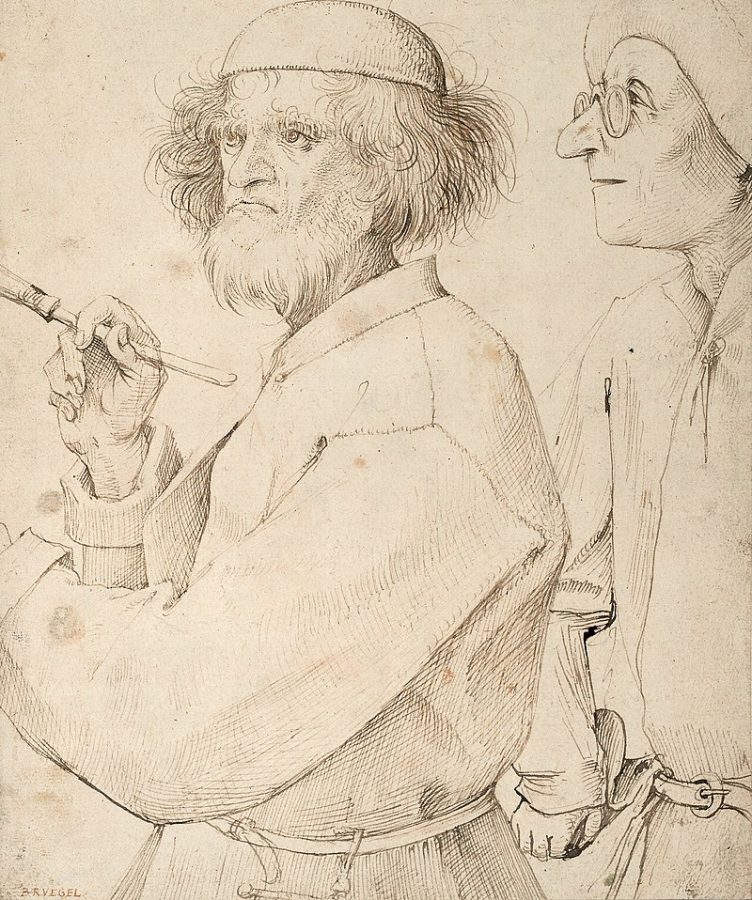
Pieter Bruegel the Elder is the most significant artist of the Northern Renaissance. He is also the greatest member of a large southern Netherlandish family of artists, active for four generations in the 16th and 17th centuries. He was an astoundingly inventive painter and his impact was widespread and long-lasting.
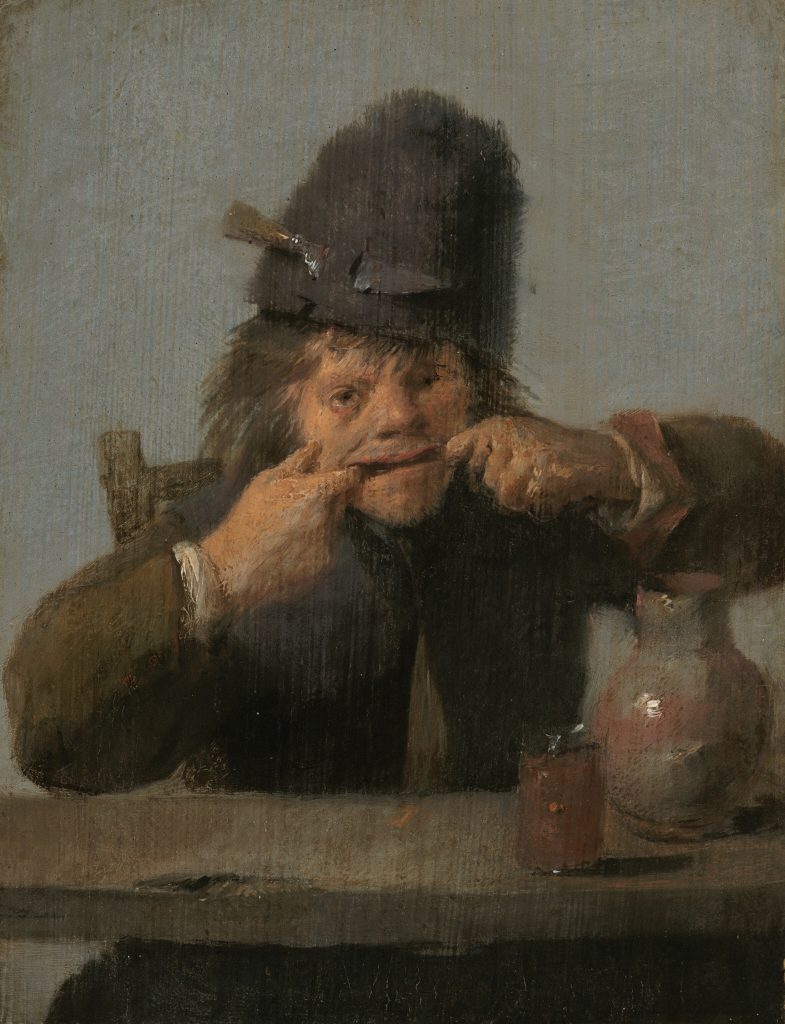
His place of birth and date are unclear; It is supposed he was born around 1525-1530, in Breda or modern-day Bruegel. According to Karel van Mander, a kind of Giorgio Vasari of the North, Bruegel studied in Antwerp with painter Pieter Coecke van Aelst between 1545-1550. In 1551 he became a free master in the Guild of Saint Luke of Antwerp.
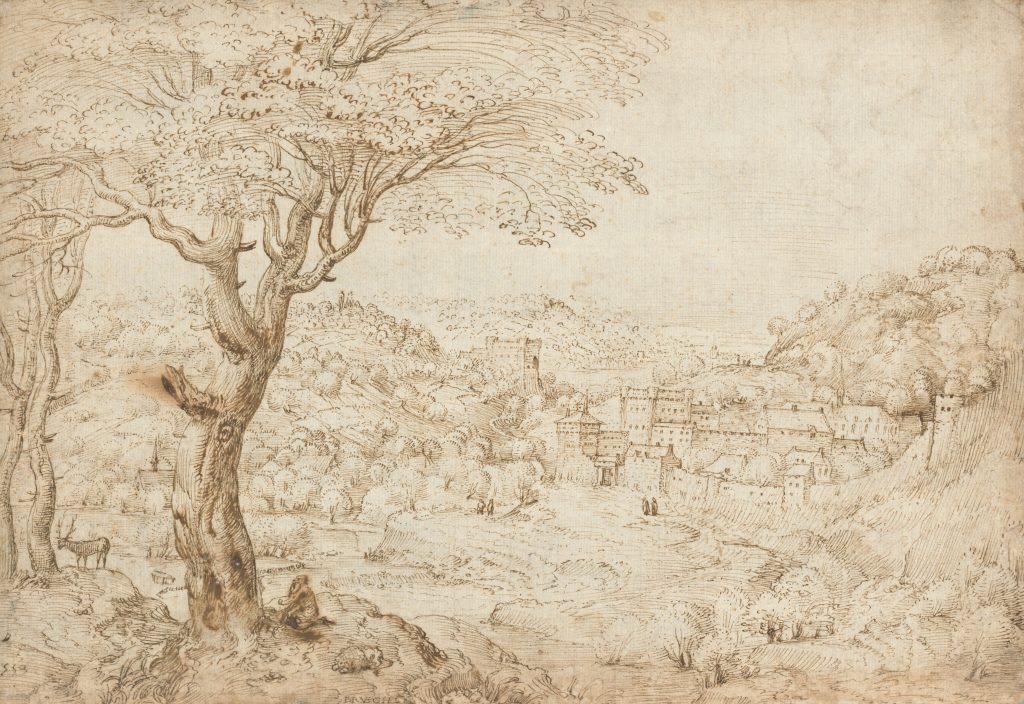
Not long after, he left for Italy where he traveled from Rome to Sicily, working with different artists. Upon his return, he published a series of Large Landscape prints. He married his master’s daughter in 1563, and not long after the couple moved to Brussels where he continued his work. Bruegel died quite young, in 1569. Since there are no paintings from that year, it is presumed he was ill. Unfortunately, he was not able to train his sons, because Pieter Brueghel the Younger was five and Jan Brueghel the Elder was just one at the time of his death.
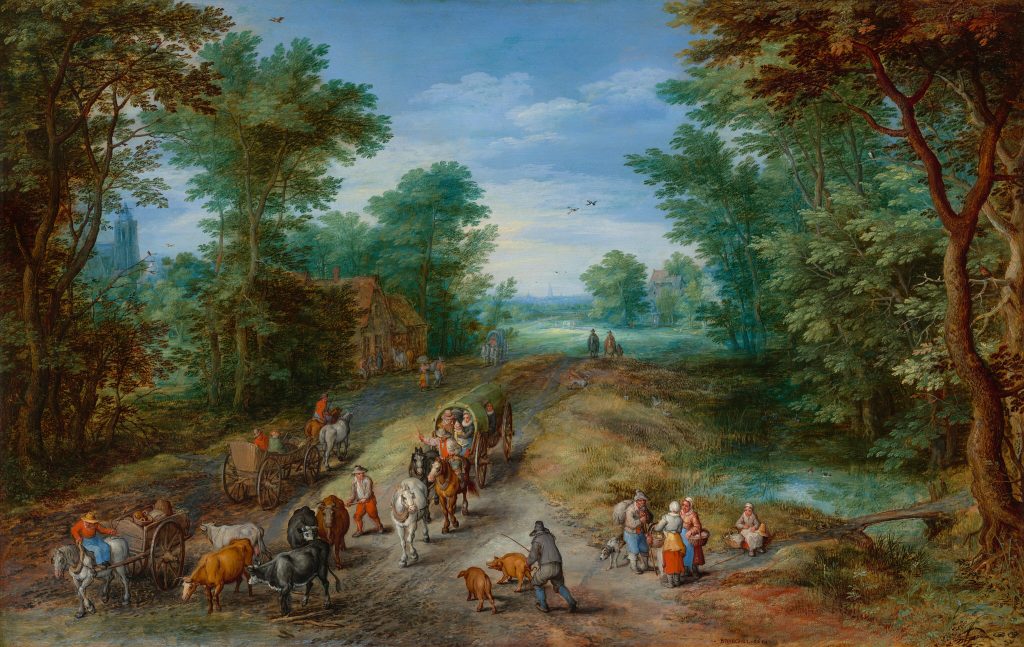
At the time, Lutheranism and Calvinism were spreading across the Netherlands. Reformation, in the form of the Dutch Reformed Church, became the dominant Protestant faith in the country from the 1560s onward. The reformation was accompanied by iconoclasm and widespread destruction of art. Although Bruegel tried to remain in the Catholic-dominated Southern Netherlands (present-day Belgium) by moving to Brussels, he might have also moved his focus from religious themes and embraced the painting of peasant scenes in order to avoid persecution.
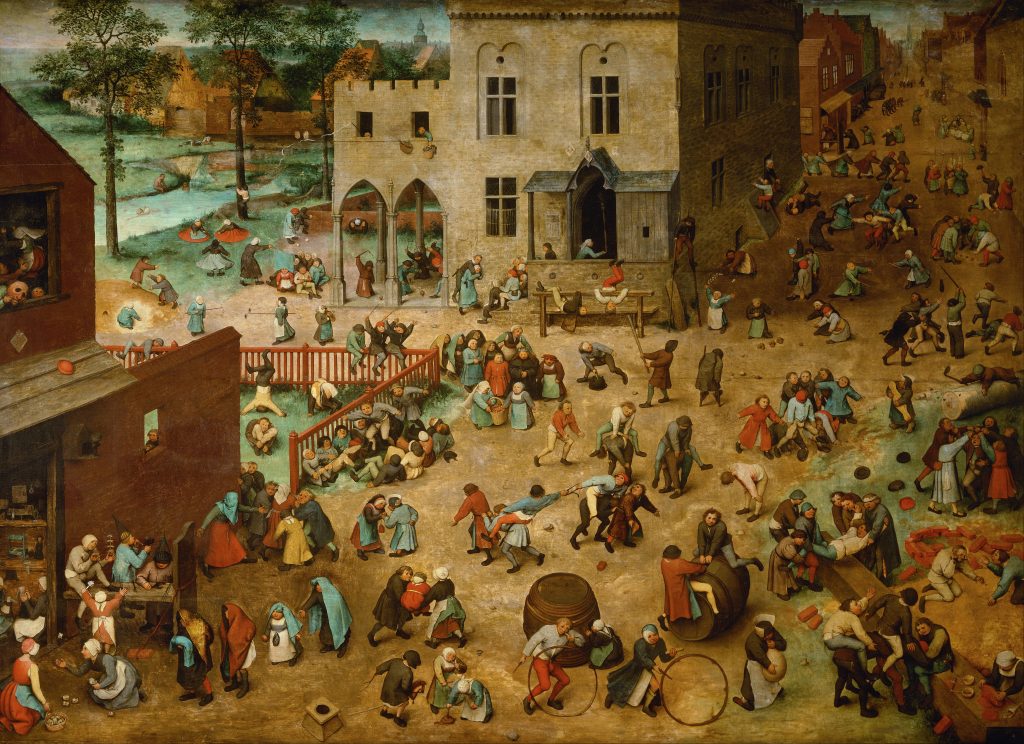
Children’s Games is a painting of large dimensions 118 cm × 161 cm (46 in × 63 in) and was completed in 1560. It represents over 90 games, some of them being practiced in the present day. Bruegel has depicted more than 250 children here. Games from mimicking real life, like wedding games or baptism imitations, to the most wired or strange are represented.
In order to be able to analyze more easily, I split the image into four sections or figures.
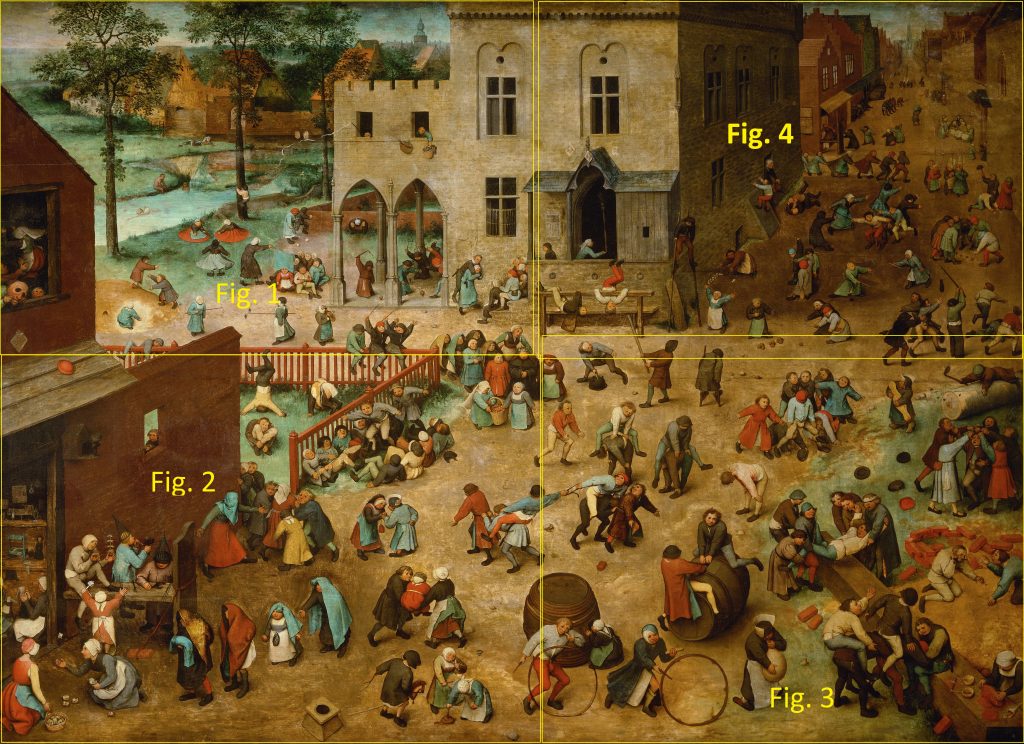
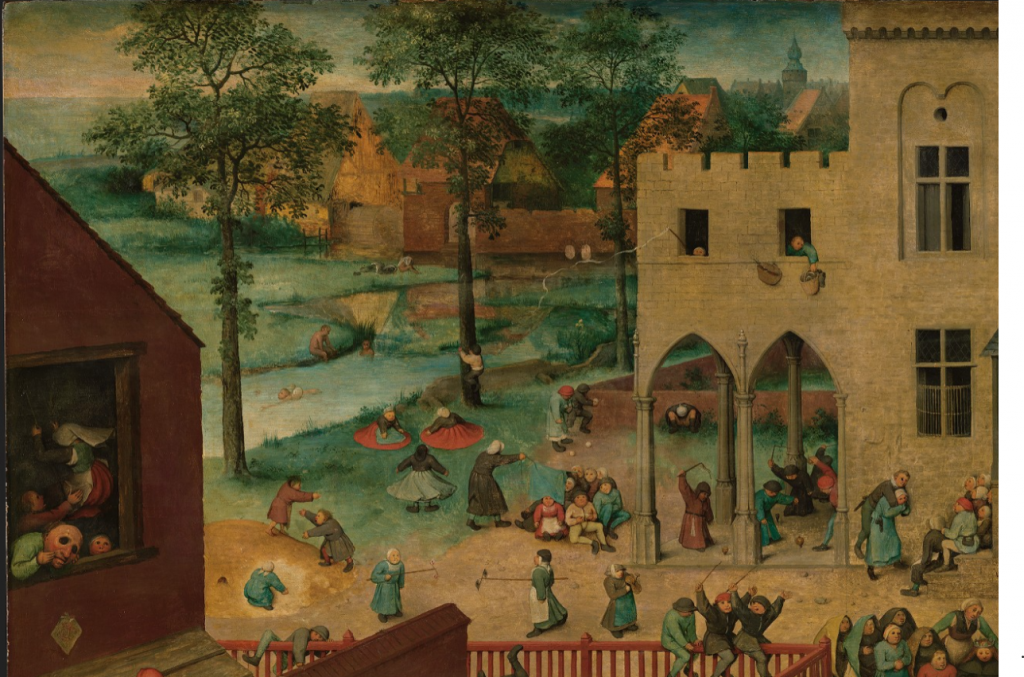
At the house’s window, we see a girl swinging in a classic hanging seat. Another child wearing a mask looks outside. A bit to the right we a girl is playing into the sand and two boys play a game called “King of the Hill.” The object is to stay on top of a large pile or mound as the “King.” Other players attempt to knock the current king off the and take their place.
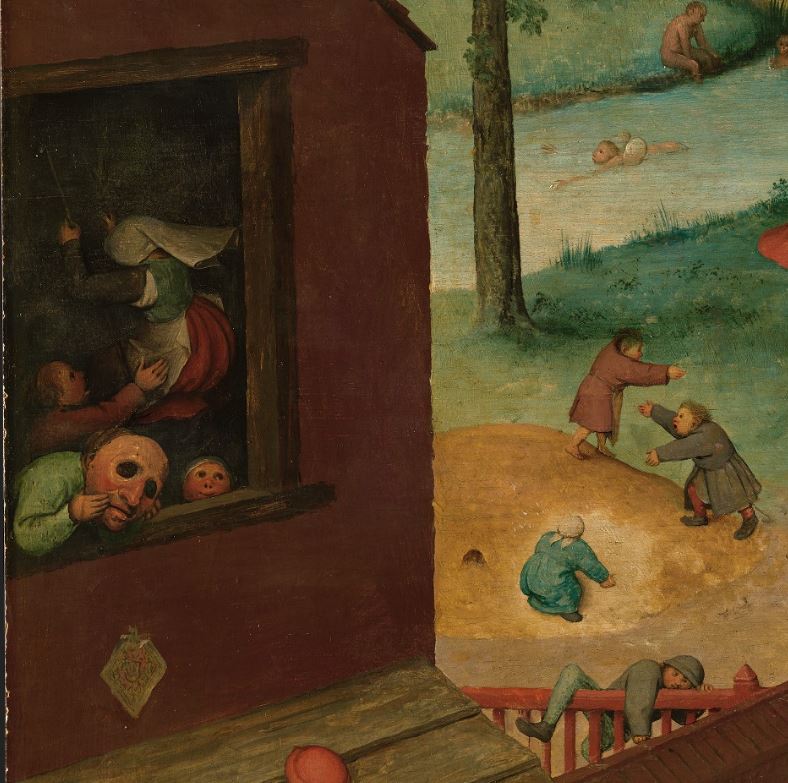
At the right side of the pile of sand two girls play a coil tournament similar to a knight’s fight. Next to them, three boys are riding a fence, pretending to be on a horse.
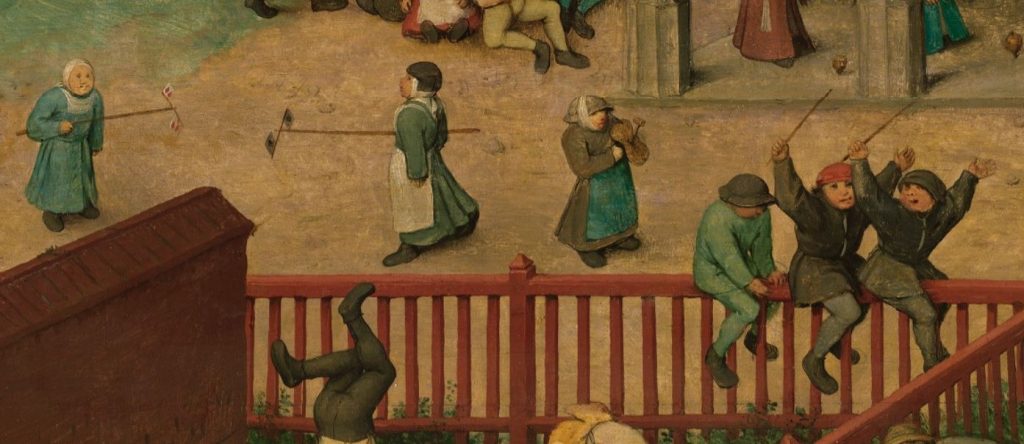
On the plot of grass, three girls are swirling skirts round and round. To their right, a girl is playing “Whom shall I choose?” selecting her “baby” from a group of friends under a blanket. Above, two children are playing bocce, a ball sport closely related to British bowls and French pétanque with a common ancestry from ancient games played in the Roman Empire. Bocce developed into its present form in Italy and spread around the world by Italian immigrants.
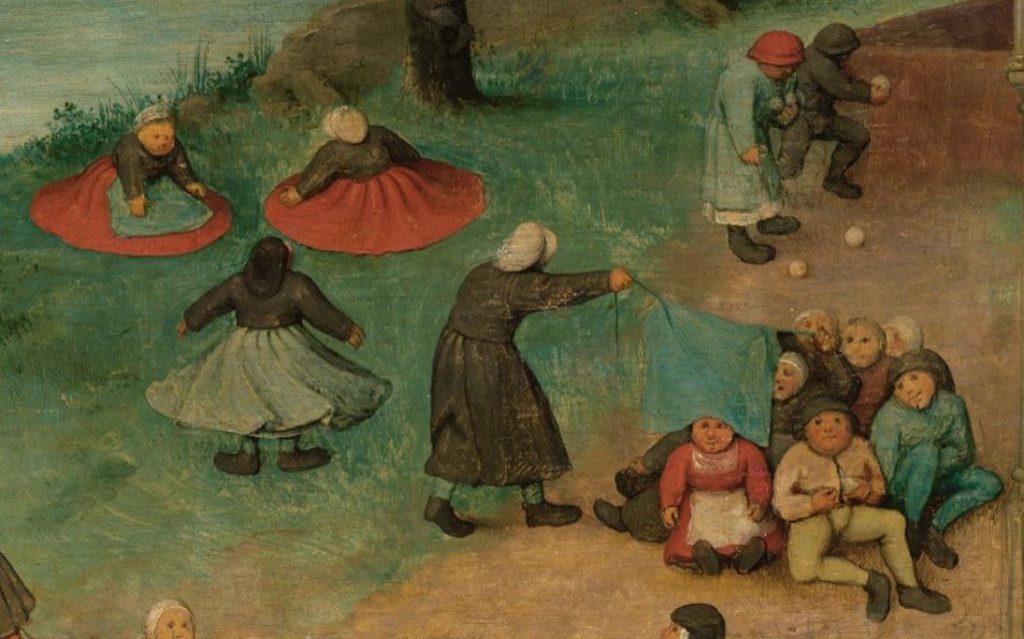
Under the arcades of the nearby building, several children play with spinning tops. They are using wipes to make them spin for a longer time. This game is still played today in some Asian countries. To their right, others are putting up a show while their friends watch from the stairs, pretending to be in a real hall. And yes, you see correctly: a boy is urinating close by. I guess he did not want to miss a second of playtime.
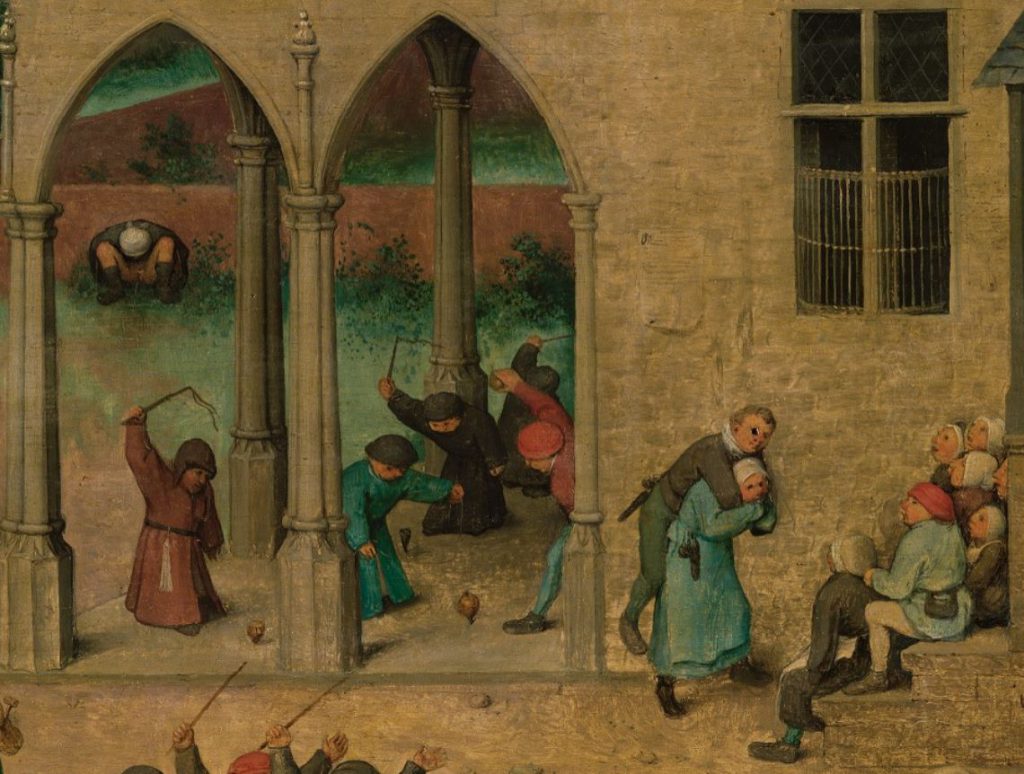
On the left side, we see children taking a swim, diving, or climbing a tree.
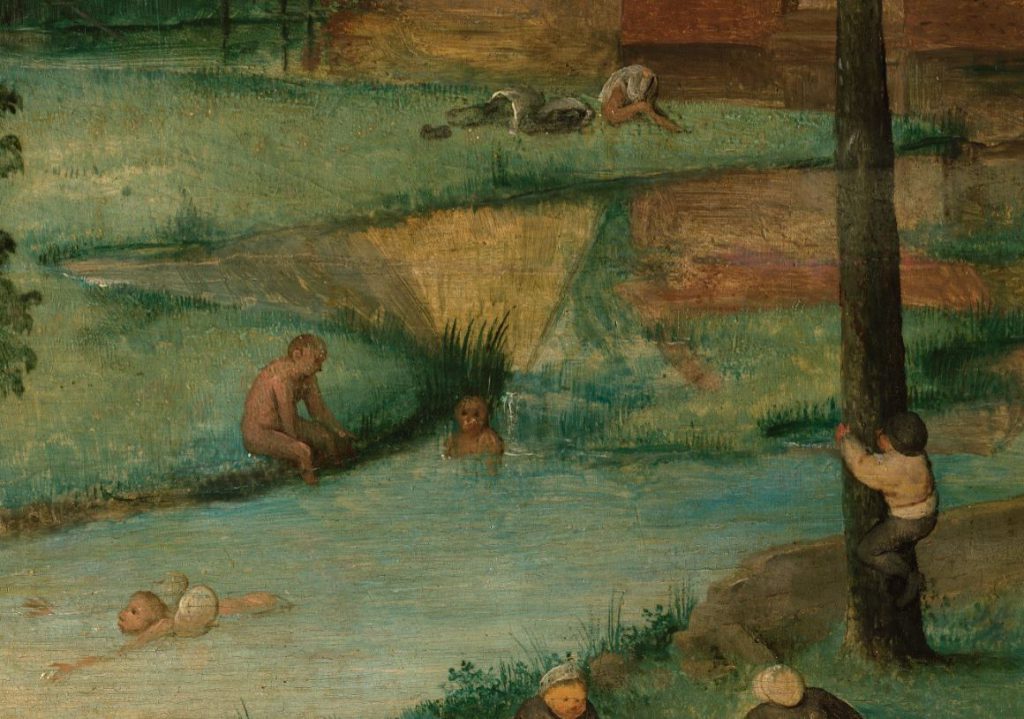
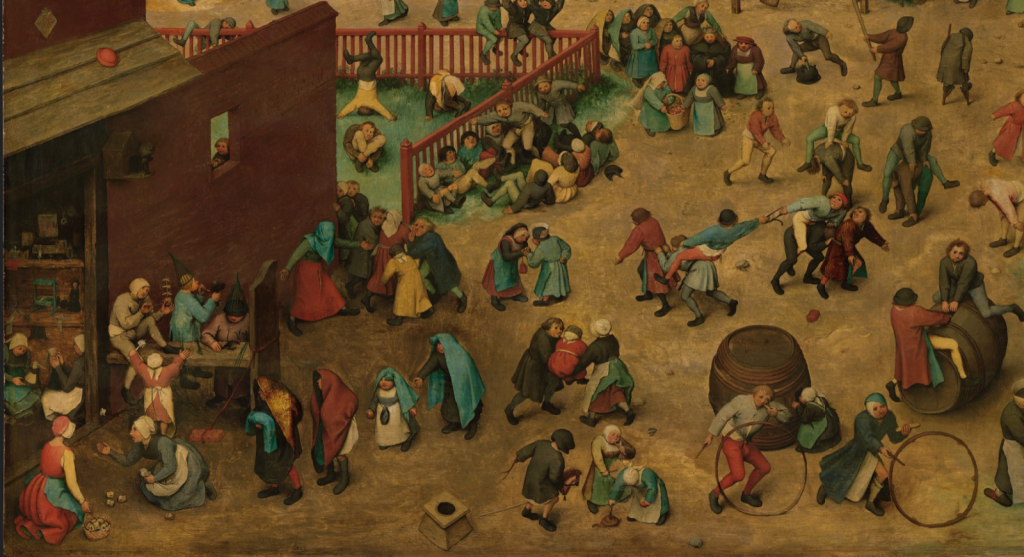
We will start looking at this section from the upper right corner where we see a wedding being mimicked. Near the fence, quite a few kids play passing through kicking legs. It was a game of speed and attention, and you could end up with serious bruises.
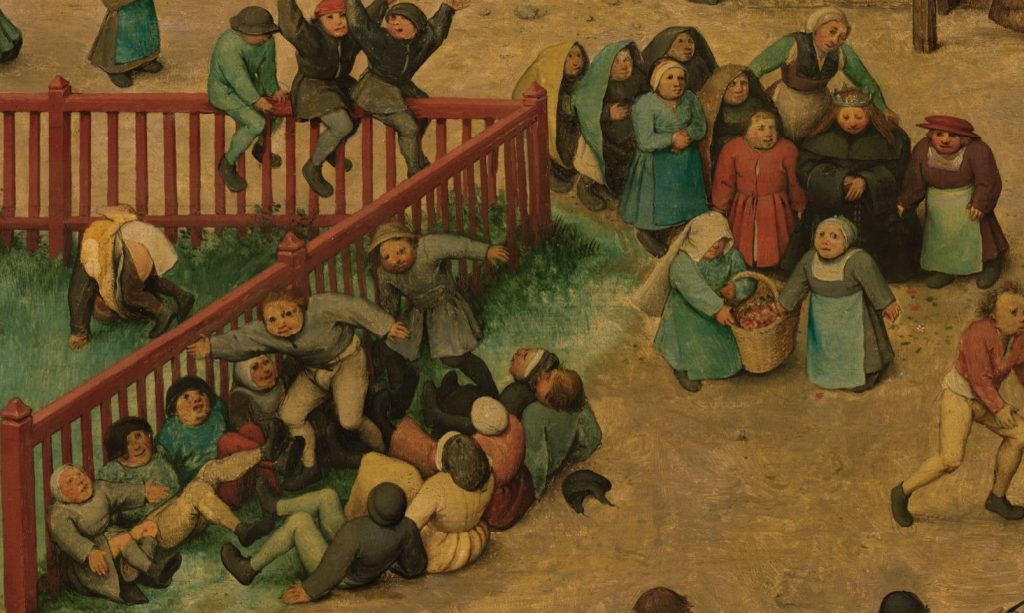
At the house’s corner, we see others playing blind man’s buff. To their right two children play “morra,” a hand game that dates back to ancient Roman and Greek times. Each player simultaneously reveals their hand, extending any number of fingers, and calls out a number. Any player who successfully guesses the total number of fingers revealed by all players combined scores a point.
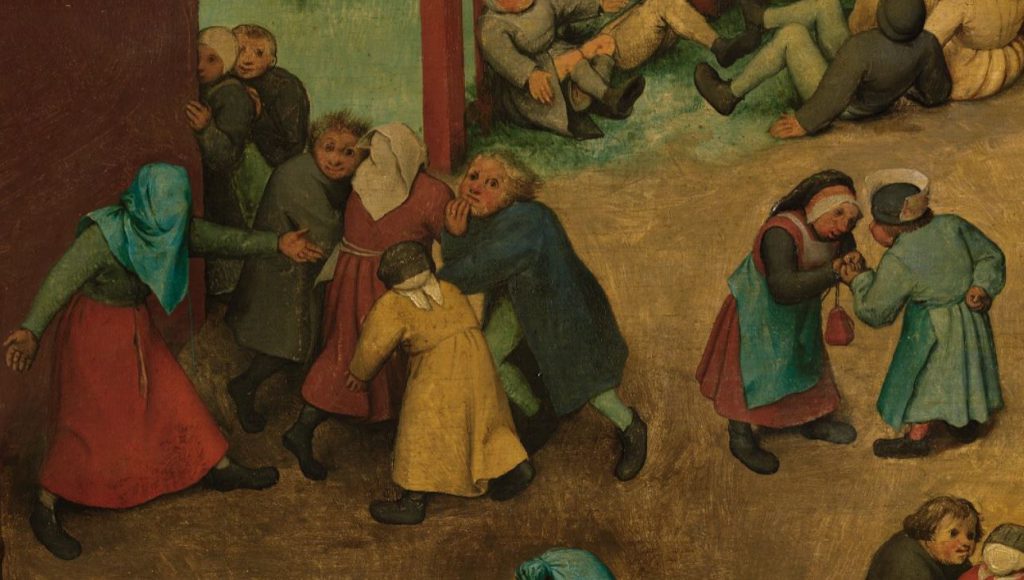
At the improvised table, children play with birds, make twig hats, blow soap balloons, and play with a flying spinneret made of nutshells. They even have a brick tied to the table, as if it were a dog on a leash.
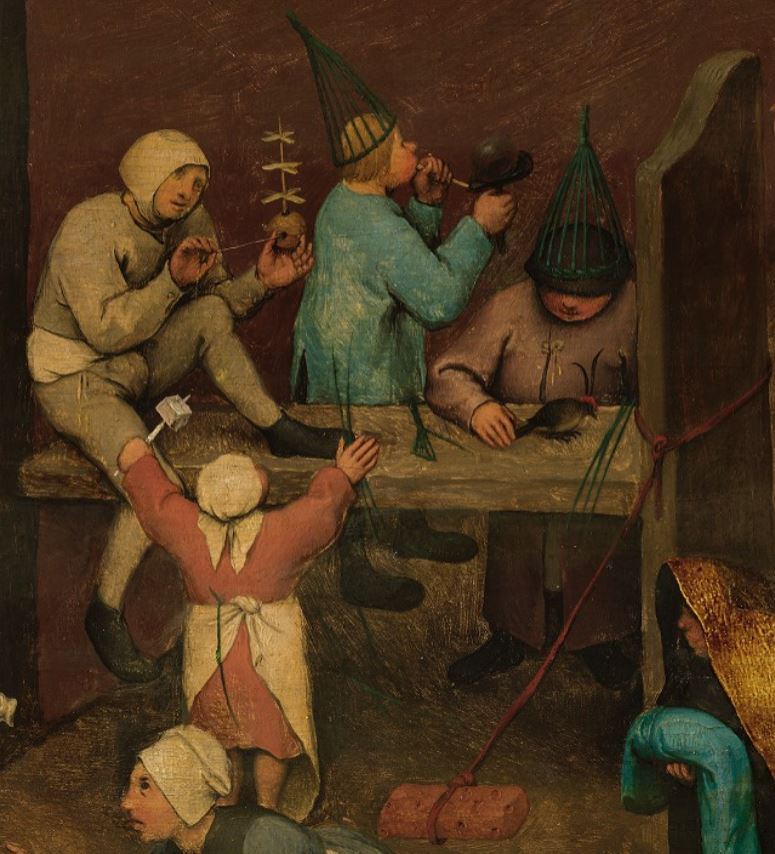
In the bottom left corner, two girls play knucklebones, also known as snobs. It is a game of dexterity and chance, played with a number of astragalus or talus – bones of the ankle joint of a sheep. It was also a fortune-telling game.
The principle of its play was based on the fact that two of the four playing sides of the talus are different. The bone turned outward was called the “dog,” while that turned in-wards (toward the other leg) was called “Venus.” When the bones were thrown, the first player to throw “Venus” won, but because of the peculiar structure of the bones “Venus” was also the most difficult throw. Victory was further taken to signify good fortune in love and marriage, as defeat portended the opposite.
Sandra Hindman, Pieter Bruegel’s Children’s Games, Folly, and Chance.
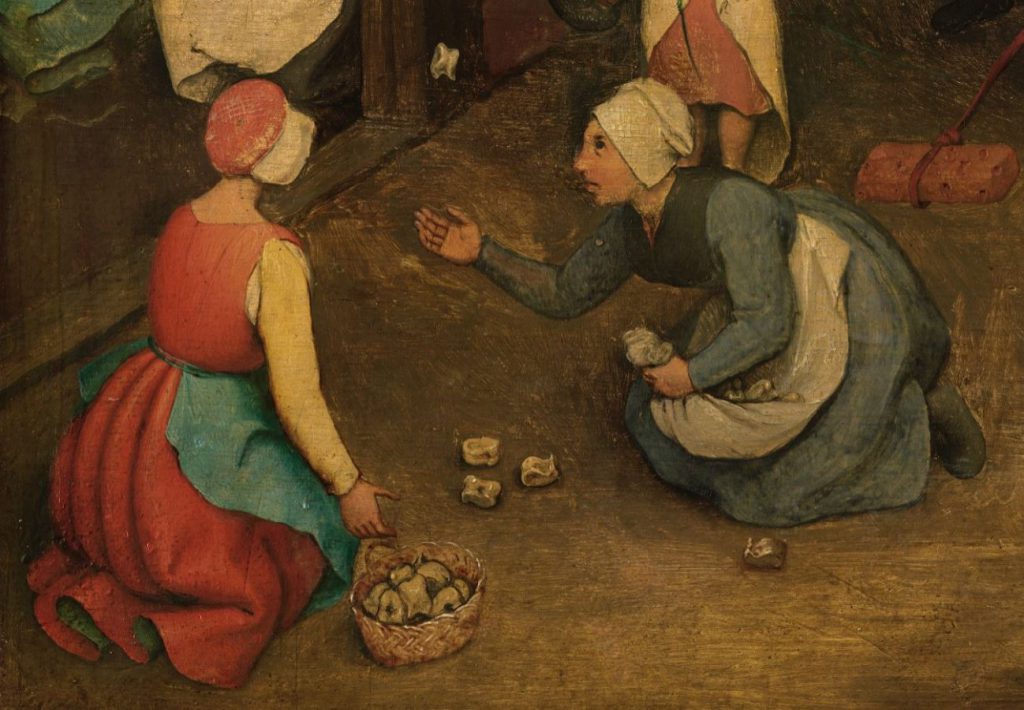
Inside the house, the girls are playing with the dolls and there are also some small liturgical objects used at mass and liturgies on a table. They are waiting for the baptism procession that comes from behind the girls playing knucklebones.
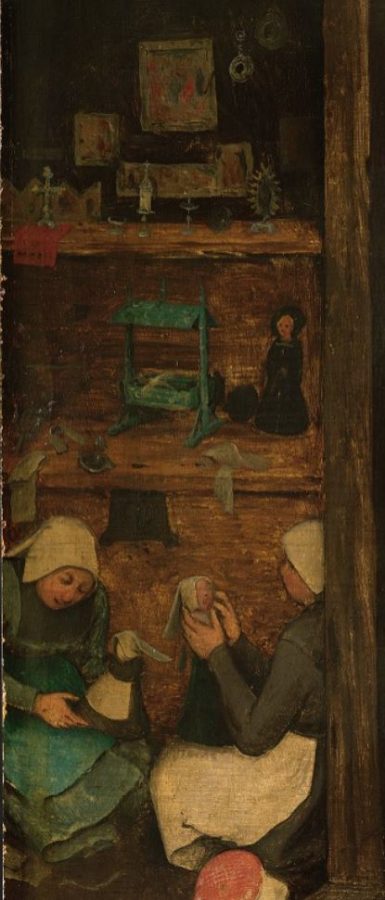
We can see the first child holding a bunch of ropes looking like a newborn while the others are following him as in a ritual procession.
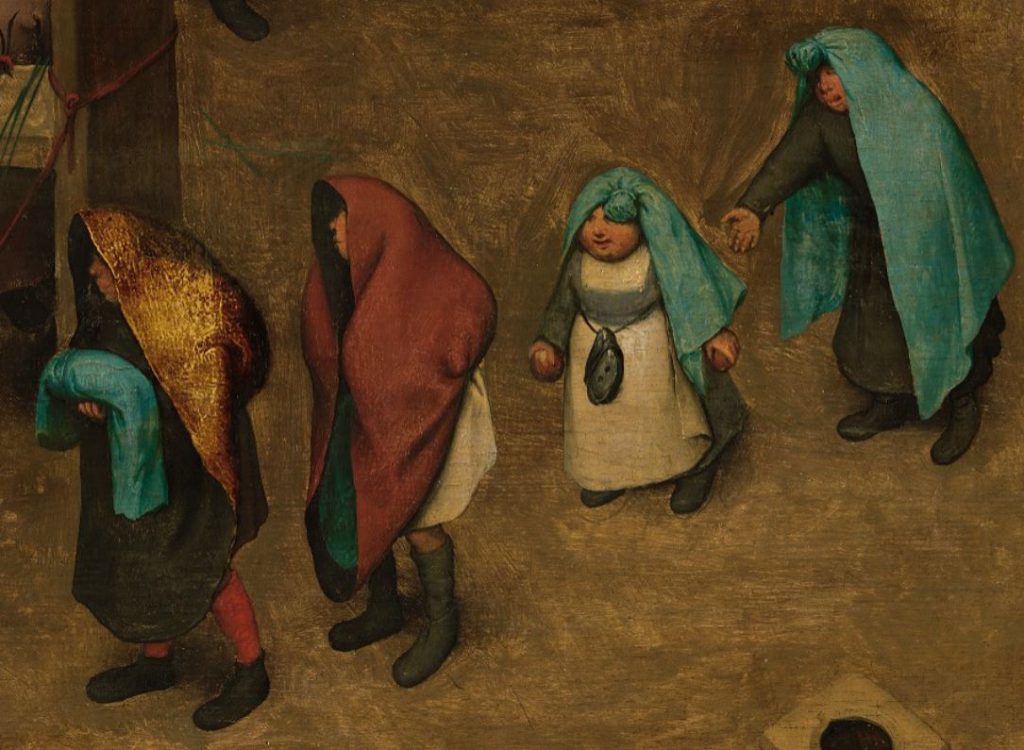
In the central part, there is a boy riding a wooden hobby horse made of a straight stick with a small horse’s head. In front of him, there are two girls, one playing a flute and a drum and the other stirring excrement with a stick. Behind them, three children play the “Pope’s seat” which is holding a child by gripping hands and swinging it. In front of the barrel, two boys are rolling hoops with the help of a stick. A little girl is shouting into the barrel from a hole, while behind it others seem to have put on a mocking tournament.
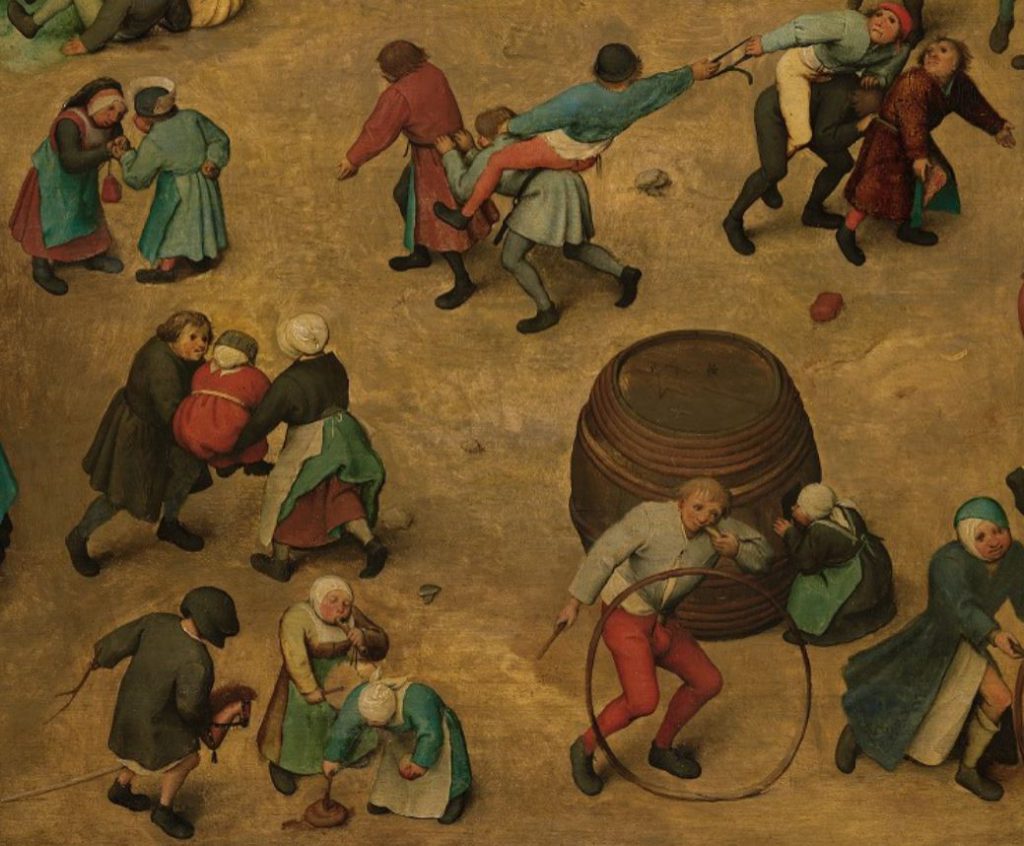

In the top left corner, we see a blindfolded boy holding a stick like in a piñata game, while behind him another one is walking on sticks. Underneath other boys play leapfrog. The first participant rests their hands on their knees and bends over. The next player places his hands on the first’s back and leaps over by straddling legs wide apart on each side. On landing, he stoops down, and the third leaps over the first and second, and the fourth over all others successively. When all the players are stooping, the last in the line begins leaping over all the others in turn.
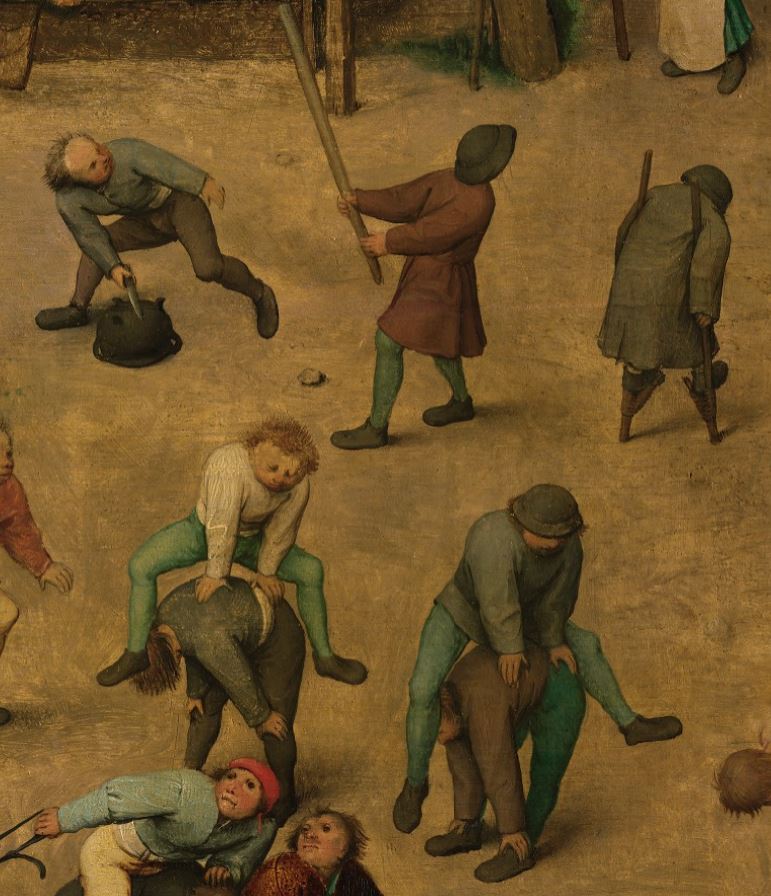
In front of them, some kids are riding a barrel. A boy is inflating a pig’s bladder in order to make a balloon. At his right, “buck-buck” also known as “Johnny-on-a-Pony” is played. It might look fun, but it is not without danger, as many broke their back playing it.
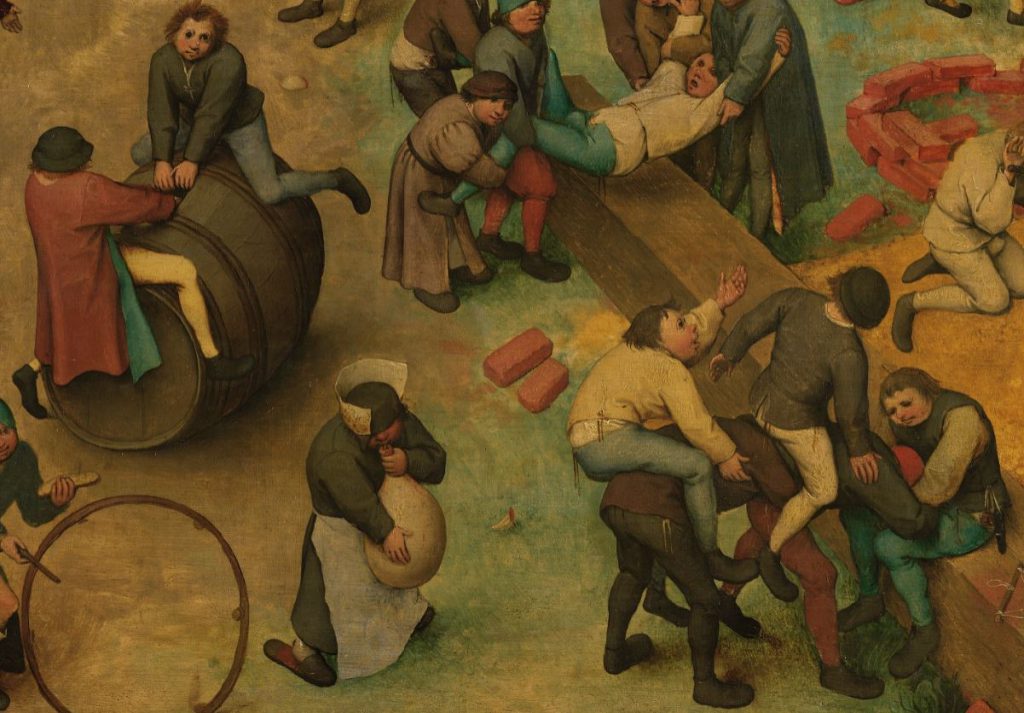
In the right bottom corner of the painting, a girl pretends to have a small shop. She even has a scale to measure the merchandise. On the side of her table, we see Bruegel’s signature and the date 1560.
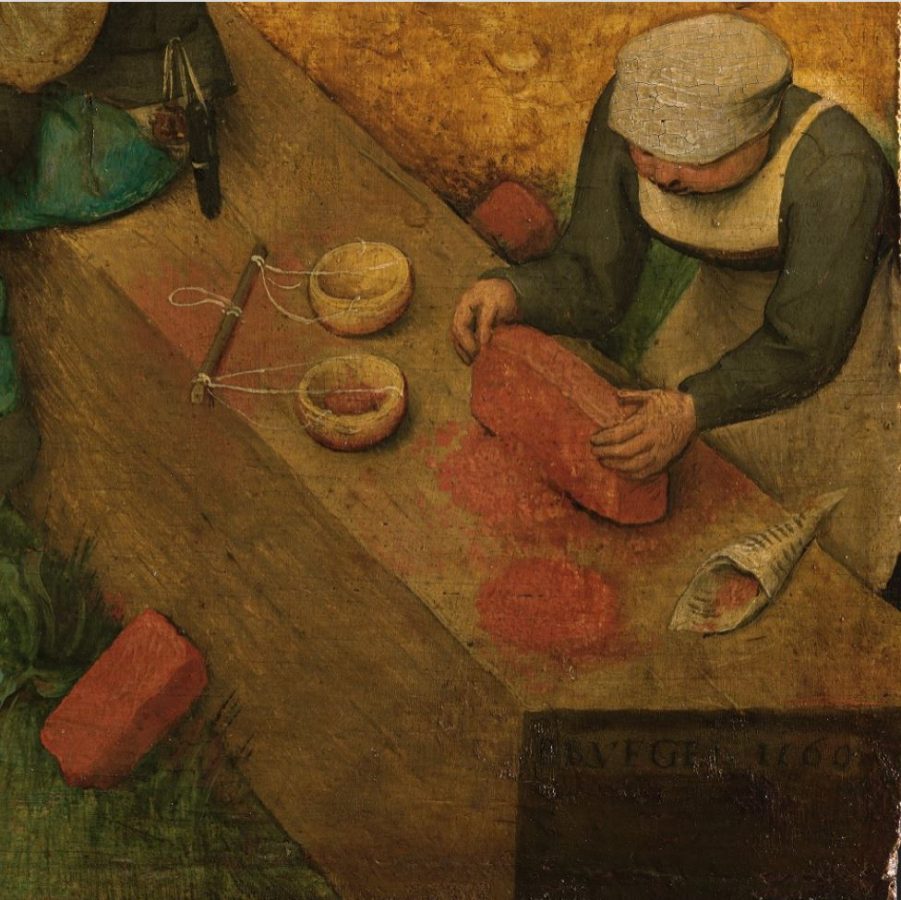
The two boys behind her seem to play “tiddlywinks.” It is played with small discs called “winks,” a pot, and a collection of squidgers. The children use a squidger (a bigger disk) to propel a wink into flight by pressing down on a wink, thereby flicking it into the air: the objective of the game is to score points by sending one’s own winks into the pot.
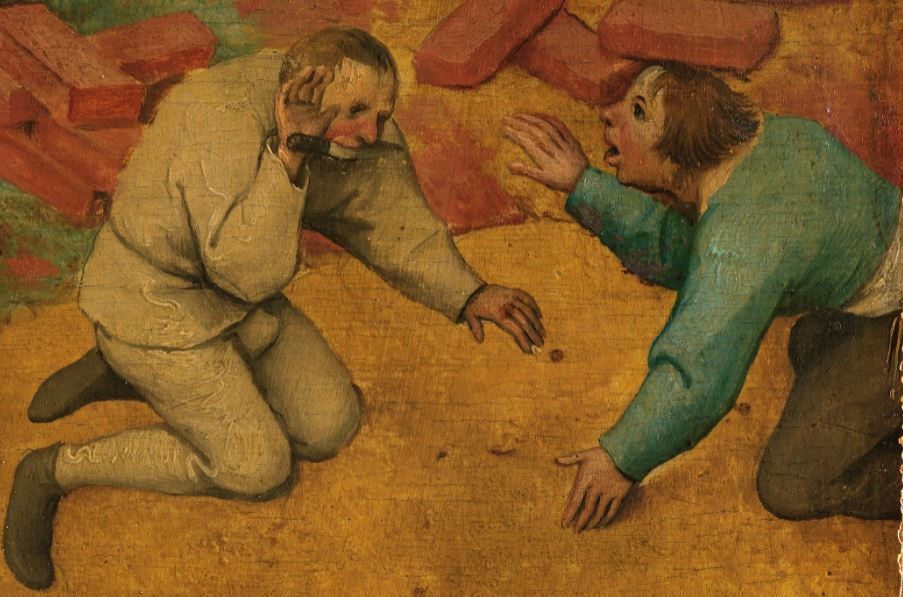
To their left others are bouncing a kid’s buttocks on planks as punishment for losing at a game.
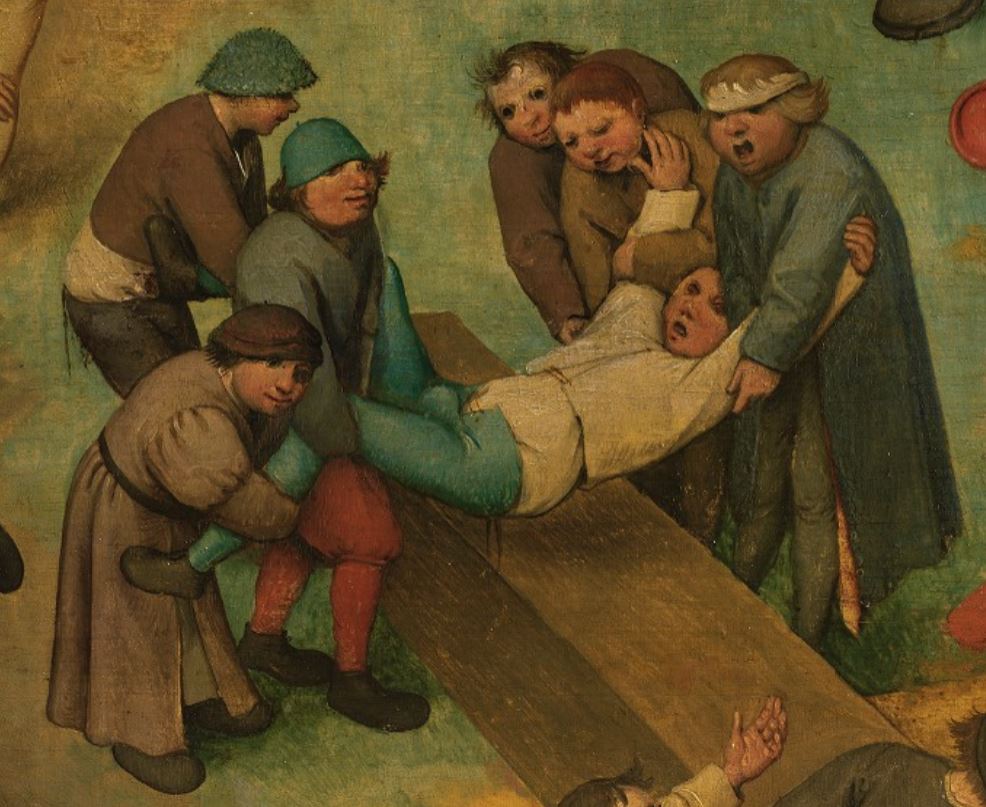
In the right upper corner of figure 3, a child riding a log is trying to catch insects with a small net tied to a stick. A bit lower, another group of children is trying to pull a hat (or his hair) from a kid. It looks like renascence bullying to me. To the left, a toddler wears a paper crown and carries a large loaf of bread, called a vollaard. Usually baked on Christmas and New Year’s Day, this loaf was also baked for St. Michael’s Day. Parents placed a vollaard underneath their children’s pillows on the night before and on the next day, the children carried the loaves through the streets. Even more to the right, some children are throwing hats through another child’s open legs to see who throws the farthest.
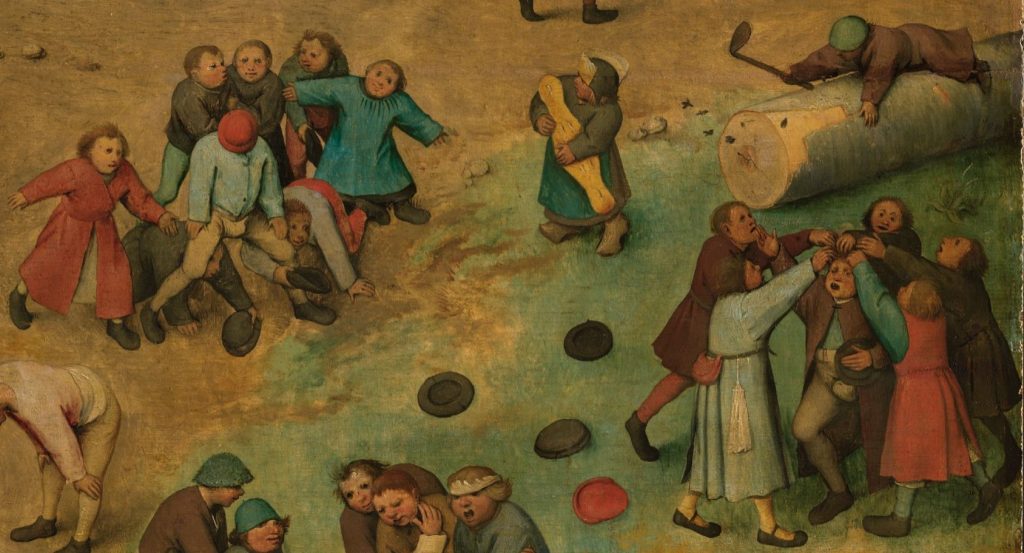
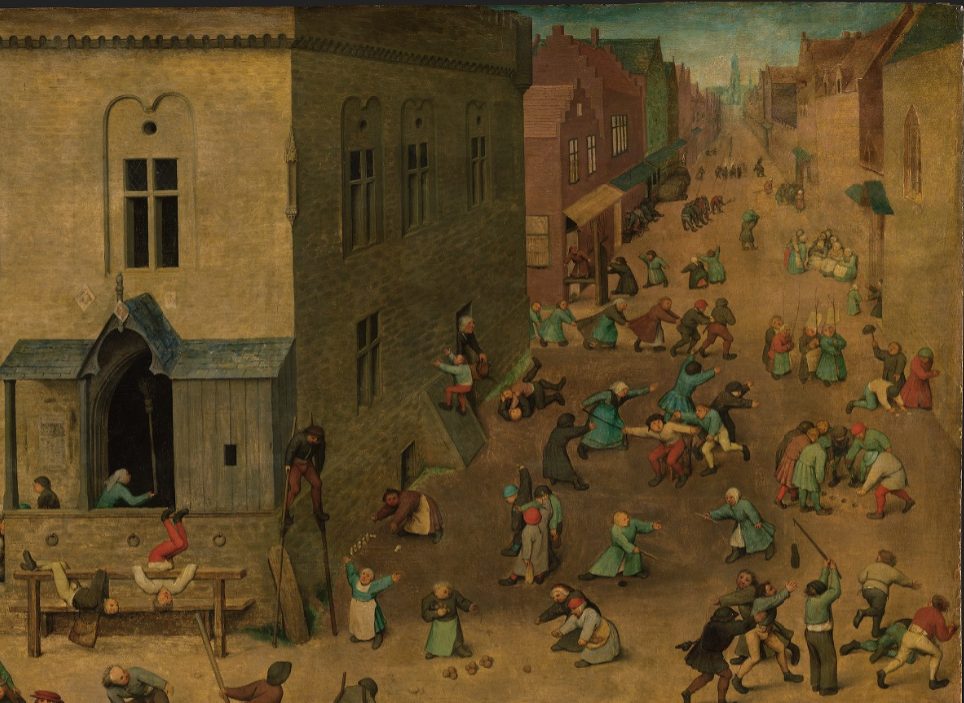
In the right bottom corner of figure 4, a group plays a version of the blind hood, and the boy in the middle seems to have a shoe tied to the stick, in order to tag the other players, while they try to still it. To the left some girls are throwing walnuts, probably a variation of bowling or bocce, hitting an assembled cluster of nuts. Near them, a boy walks on long poles while the little girl appears to say: “How tall you are and how brave!”
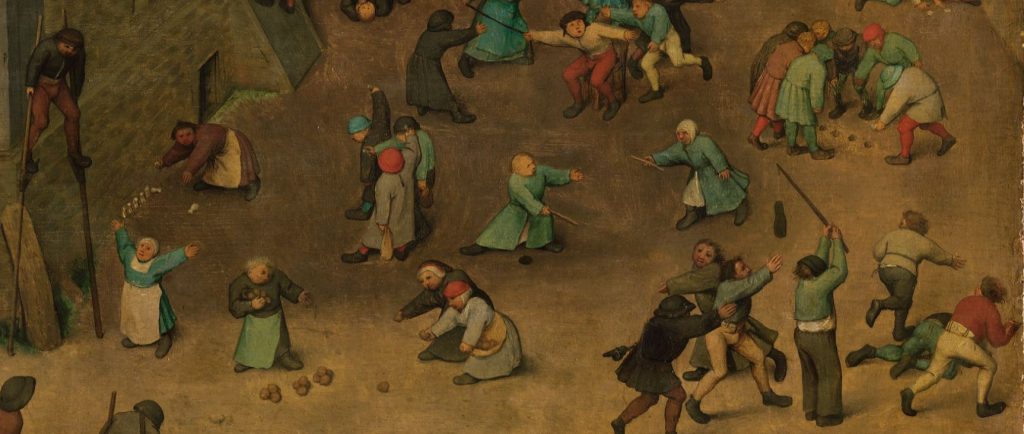
Right at the entrance of the big building, which seems to be a public institution of some sort, a girl is trying to balance a broomstick on a finger. Could this be an allusion to politics?
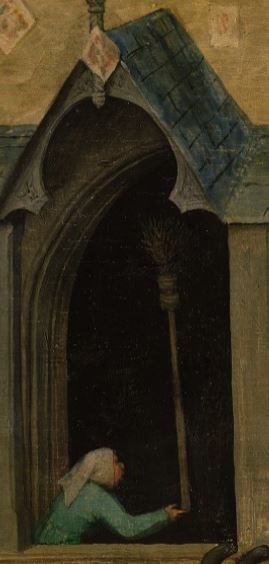
Along the wall some are bowling with knucklebones, a kid is trying to climb the wall, while those in the back are fighting so intensely that a woman throws water on them in order to calm them down.
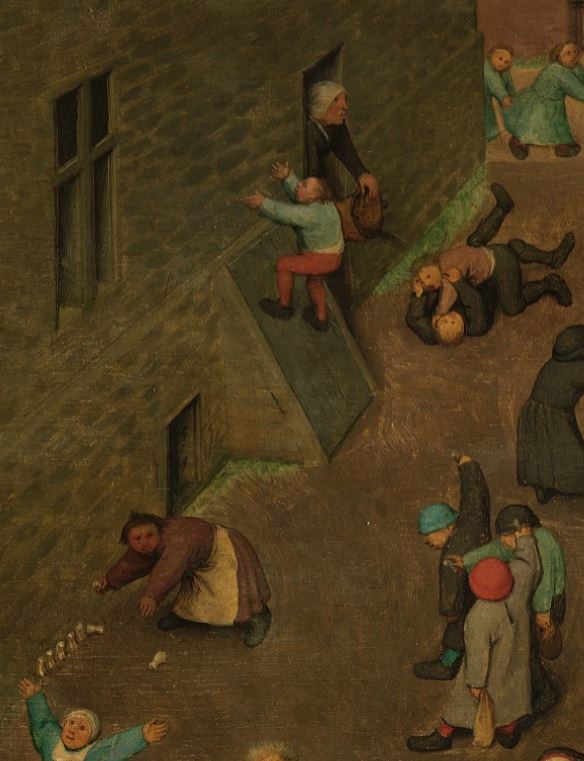
From behind the building, a convoy plays the “devil’s tail” or the “snake” while in front of them there is another convoy mimicking a religious procession.

The girls on the bottom right of figure 4 are singing in choir while the kids across the street seem to play follow the leader. Behind them, some boys are playing, pushing each other off the bench, and the ones to their right are riding a broom. Further back, in the middle of the street, the kids started St. John’s fire and appear to throw sticks into the fire as well as dancing around it.
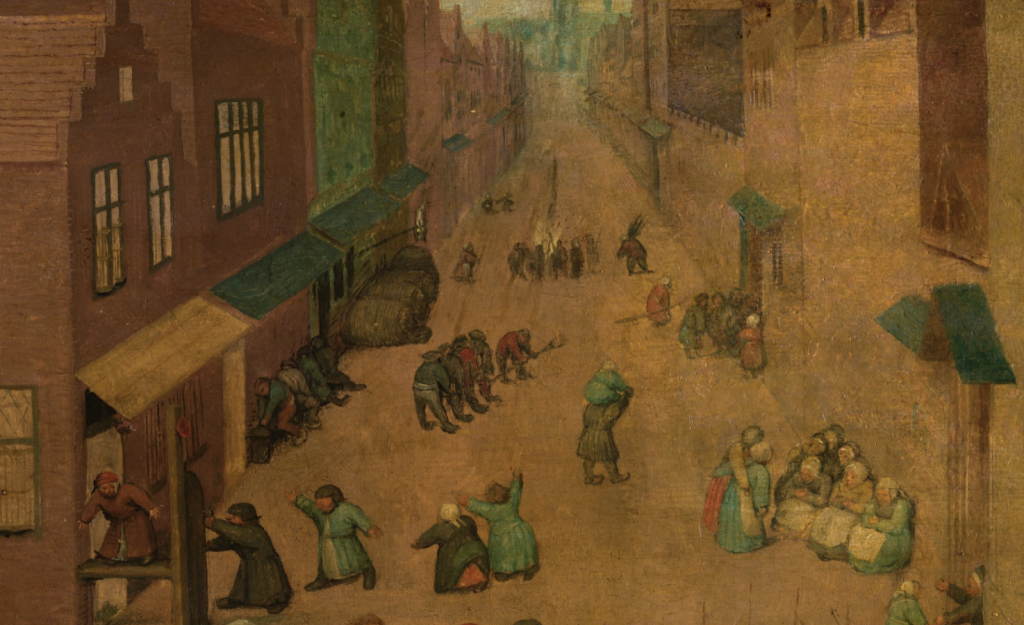
These were the games kids used to play in 1560s Southern Netherlands. In Bruegel’s Children’s Games, we see fun, energetic, and innocent games, as well as ones that prepare children for their future life as adults. This was the purpose of playing.
Which of these games remind you of your childhood? What were your favorite games? Do your children still play any of these games? Please write to us and share games from your country!
TIP 1: When you have a painting as crowded as this one, I recommend you buy a puzzle with it. That will give you the opportunity to look carefully at each piece and detail of the image and it will be lots of fun.
TIP 2: For high-resolution images of Brugel’s painting’s take a look here.
DailyArt Magazine needs your support. Every contribution, however big or small, is very valuable for our future. Thanks to it, we will be able to sustain and grow the Magazine. Thank you for your help!